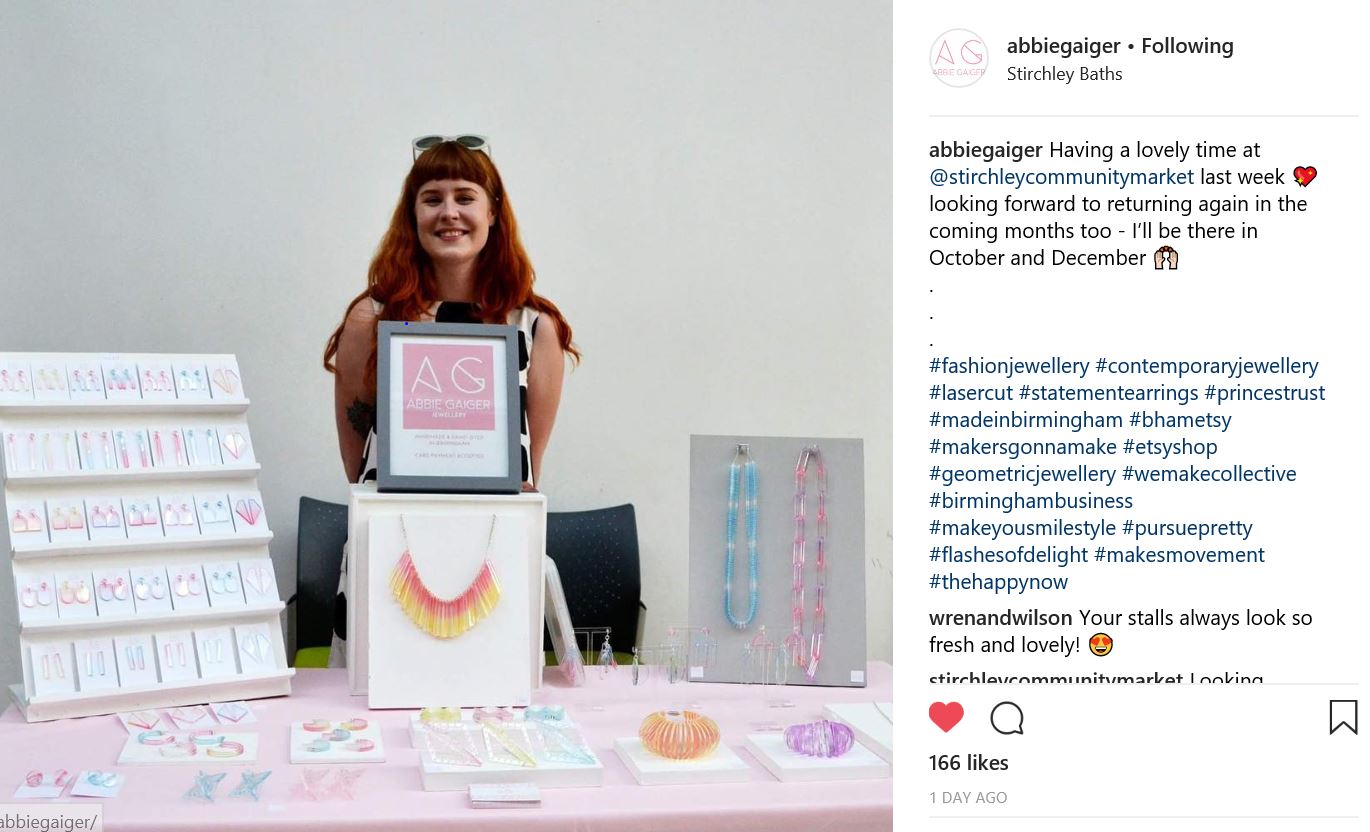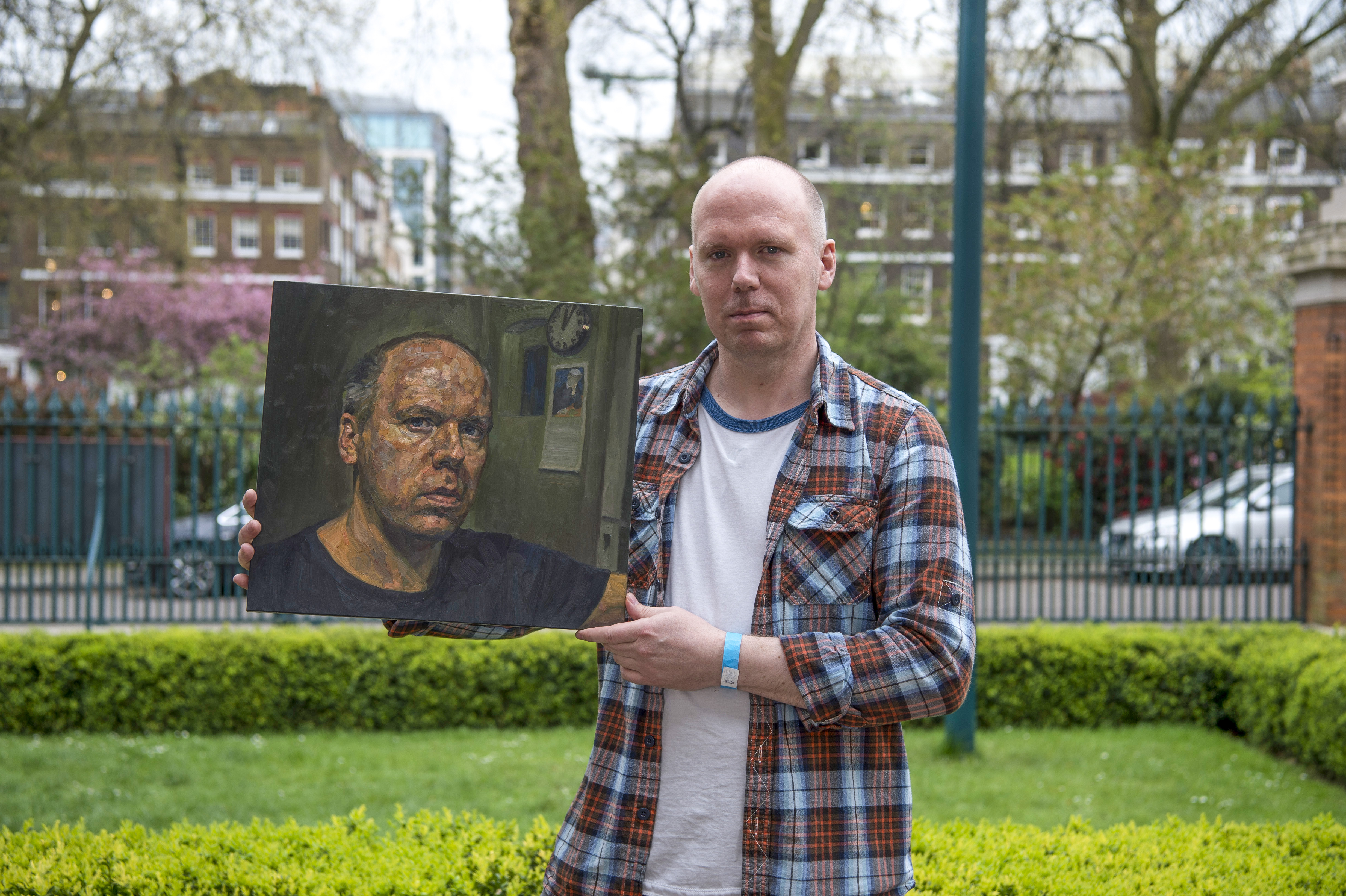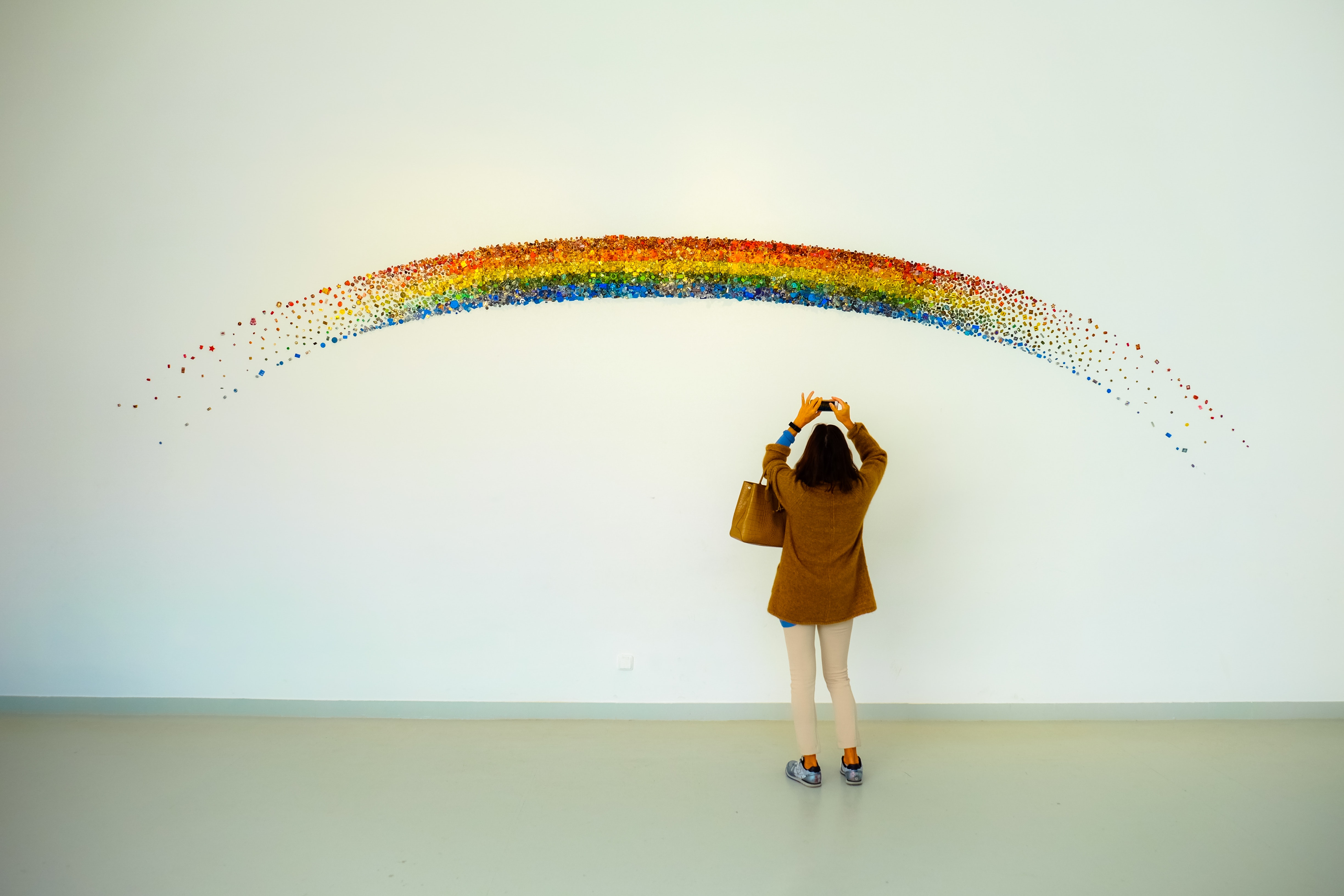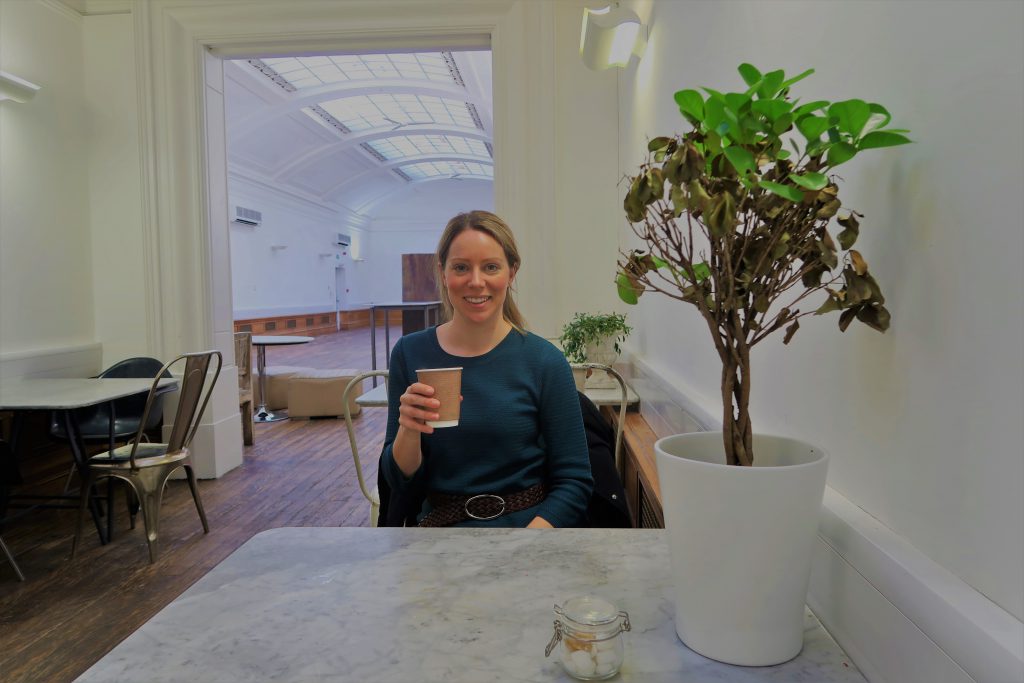Are you wondering how to sell your art?
If that’s the case, you’re in the right place. I have spent my entire career working with artists asking this question, as well as collectors looking for new artworks to invest in. I always recommend taking several approaches, rather than relying on just one. I have also seen a few common themes amongst all of the artists who have successfully sold their art: they have a strong identity as an artist, lots of self-belief, and they can articulate with absolute conviction what it is that defines their practice.
So, what’s your first move?

Build a brand
You want people to recognise your art instantly as YOUR art. Think about Yayoi Kusama’s trademark polka dot patterns, Jackson Pollock’s large ‘drip paintings’ or Conor Harrington’s graffiti-style contemporary history paintings. Do you have a unique style? Are you consistent? What makes you stand out?
To sell your art you will also need to be a storyteller.
You will need to be able to answer these questions, which form your brand:
What makes your practice exclusive?
What are you trying to say through your artwork?
What does your art mean to you?
Why do you make art?
You must be able to answer these questions in person when you meet curators, dealers and collectors.
If there is one thing I learnt from my first job working for an art dealership, it is this: art collectors love to buy directly from artists. During exhibition openings, most artworks were bought after the client had met the artist and heard from them more personal details about and insights into their practice and specific artworks.
You are your best art dealer.

Write a strong artist’s statement
Based on the above questions, and as part of building your brand, it is essential that you write a strong artist’s statement. This tells your story and introduces your brand. You will need this when you make applications for grants, art schools, open-call exhibitions, residencies and so on. You should also share this on your website, for collectors to read. You want them to invest in your unique brand.
It’s important to create a statement that is easy to understand whilst doing your work justice.
Start by mapping out your ideas, values and artistic aims. From there, organise your statement into 3 paragraphs. Begin with a broad overview of your ideas, then explain your materials, and end with a description of your personal philosophies/artistic theories which have informed your practice. Write more than you need, so you can edit it and cut it down. Ask for feedback from friends, colleagues and other artists.
Edit, edit, edit.
Need help writing a statement? Then, get in touch as I can help you with this.
Create a winning website
Today, the art community has moved online. Collectors, curators and dealers will read content on artists’ websites. If you’re an artist, this gives you the opportunity and power to market your portfolio by yourself. All you need is a simple but stylish layout, with well-organised content made easy for visitors to view and read. There are lots of portfolio-based websites where you can upload images and text into ready-made templates. No complex coding required.
Here are 3 which I recommend:
Lots of art students and recent graduates use Wix, as it’s a free option. With over 500 templates, you can choose something which suits your style.
Squarespace is known for its beautiful templates that will help to get you started with a more professional aesthetic. Customisable settings include fonts, colours, and page configurations (you can include a shop).
This template is set up for selling art online, and covers everything from payments to secure checkout and shipping. You can also choose between hundreds of themes and colours for the design.
Once you’re set up, you will need to include a short introduction, your artist’s statement and a CV listing any exhibitions you have been included in, awards, education and other achievements. Most collectors won’t buy until they have seen some validation for them liking your work.
Obviously, you will also need to include a selection of your art on the website. But, it’s just a selection, carefully curated and organised. Not everything. This is not your studio.
You can read more about what to include, and what NOT to include, here.
Sell through social media
It’s 2018. Social media is the best way for you to connect with your (potential) customers on personal level. It also the best way for you to direct traffic to your website.
My first recommendation here is to manage one social media platform well, than various channels badly. Again, this is the place to build and share your brand. What messages do you want to get across to your audience? What are you offering them? Insights into the making process are popular, as are stories about what you are creating and why. This is not the place for the hard sell.
Check out portrait artist Danny Howes’ Instagram account for inspiration. He uses both photos and videos to share his most recent paintings, and the process for making them.
“My live streams and Instagram account are where most of my art sales traffic comes from. Most of my orders are international, with 70% sold to American clients. So, social media is a fantastic tool for me as an artist” – MrASingh.
Another artist who sells art online is Amrit Singh. He creates time lapse videos of his #InkANIMA art, from which he makes sales.
Want more tips on selling your art via social media?
I recently wrote a feature on how to promote your art online and get noticed, including what sort of content you should be sharing on Instagram. You can find this advice here.
Sell through online art galleries
Each year, more and more art is being sold online. You can monopolise on millennials choosing to buy art from their mobiles or laptops. One of the best ways to do this? You can sell your art online through one or more of the already established platforms. There are too many to choose from today, so here are 2 which I recommend:
Saatchi Art was the first e-gallery. It calls itself “the world’s leading online gallery”—and it probably is. You can use it to sell original paintings, prints, photographs and more. It is the largest gallery and platform for artists in the world. There are around 500,000 original artworks by more than 60,000 artists! Prices start at $40 for prints. The application is free and you will receive 65 percent of the sale proceeds.
Artfinder is almost like a dating site for art: it matches buyers with art they’ll like. You can sell original paintings, sculptures, limited edition prints and photography to collectors across the globe. It has more than 300,000 works by over 10,000 artists, and more than 500,000 subscribers. Artworks sale prices start at $13. You will receive 67 percent of the sale proceeds.
Cosimo is a 0% commission gallery platform designed to make it easier for artists to connect with those who love what they create, and with each other. The platform helps artists take their practice to the next level – from the latest tech to good old-fashioned human interaction, support, and community events. Artists get paid directly for their work, and receive 100% of each sale.
Etsy your art
Etsy is largely known as a marketplace for homemade crafts and vintage goods but it’s increasingly being used as a shop front for artists to sell their work. You are running a business through Etsy, so make sure you consider your customers’ experience: answer their questions politely and promptly, and package your art professionally. Remember, you are selling a high-quality product and are proud of it! You can link to your Etsy store from any social media accounts (in your profile section) and your website.

Photograph your portfolio
High quality photographs of your art are essential. They showcase your artworks and also represent how seriously you take your practice. So, invest in a good camera, learn some basic photography techniques and take plenty of photos for your website/Etsy store/social media. You might also decide to hire a professional photographer, which I think is worth the cost. Interesting shots of your studio are great for social media.
Sell (well) at local art and craft markets
Research local art and craft fairs, pop-up shops and trade shows in your area. Starting small, with a stand at one of these events, is a great way to raise your profile, meet customers in person and network with other artists and makers.
Once you’re there, you need to make sure that your display has clear, coherent branding and instantly tells people who you are and what you do. What will make them stop at your stand? Apply your branding to the whole of your display, from your signage and props right down to the smallest details like price labels and ribbon.
You are your brand, too. So, stand up and be friendly and ready to talk about your work (even if it the 60th time you’ve explained the same thing!).
Get into galleries
I used to work in a commercial gallery, and lots of artists would turn up, portfolio in hand. This is not the way to make a good impression. Dealers and gallerists spend lots of time attending exhibitions in order to spot new talent. So, get yourself into some group shows, and then send an invitation to galleries you think could be a good fit for your art.
If you send the invitation by email, take the time to address it to the Gallery Director or Gallery Manager and include a personal note and branded business card. Another tip is to address the email to the Gallery’s Administrator (the Director will already receive many, many emails).
Getting into a gallery can take a while, but worth the wait.

Press for press
Once you’ve created an online presence and strong brand, it’s time to encourage interest from the press. This will also help galleries, dealers, curators and collectors to hear about you.
Start a press file. Gather contact details for relevant journalists and editors. Constantly update your list as your find new magazines, papers, newsletters, mailing lists, bloggers, vloggers and radio shows. Start with local press.
When you’ve landed a new exhibition or have news of an award or an interesting project, send along details to the local paper in the form of a press release.
Include the who, what, where, when and why, as well as your contact details and website/Etsy store.
Why not approach a blogger, asking if they want to feature your work on their site? I regularly feature artists whose work I admire, and link to their online shops.
Collaborate
There are many opportunities for artists to collaborate. Why not team up with a local charity?
Charities are always putting on events, from gala dinners and raffles to silent auctions. This means that they’re on the lookout for new ideas for events or exciting prizes. Find a charity whose work you admire and offer to give them a painting for their auction or help them organize an event at the local gallery.
In turn, this will make a great news story which you can share with press. It may also lead to them commissioning further projects or artworks from you.
It will also introduce new potential art collectors to your work and brand, and will drive traffic to your website or store from where you can sell your art.
Get people talking
Let me leave you with this uplifting and inspiring TED talk by Adrain Salamunovic: The Wealthy Artist: 6 Myths and 6 Tips on Marketing your Art.
This is an incredibly empowering talk on how the power has shifted to the artist today. Throughout this motivational TED talk, Adrain Salamunovic gives practical tips, such as how to sell artwork online, how to price artwork and increase revenue, and importance of knowing your brand as an artist. Particualrly relevant with rise of social media platfomrs giving power to artists (away from curators/dealers) . just as can pubish own book, can easily set up website and blog or create an Etsy platform, from which you can sell particularly smaller items, such as edition prints. It will make you want to get your artwork out there!
You can also read my recommended list of the best art and culture TED talks here. Worth listening to you while you’re in the studio!
Ruth x



